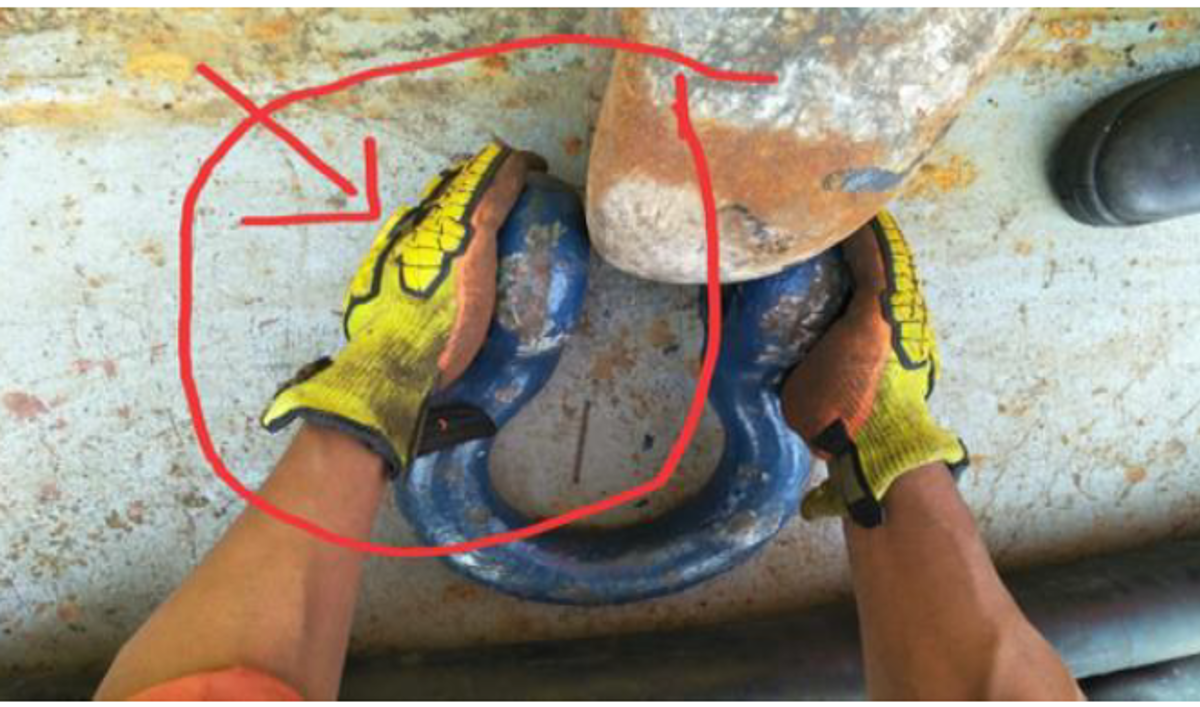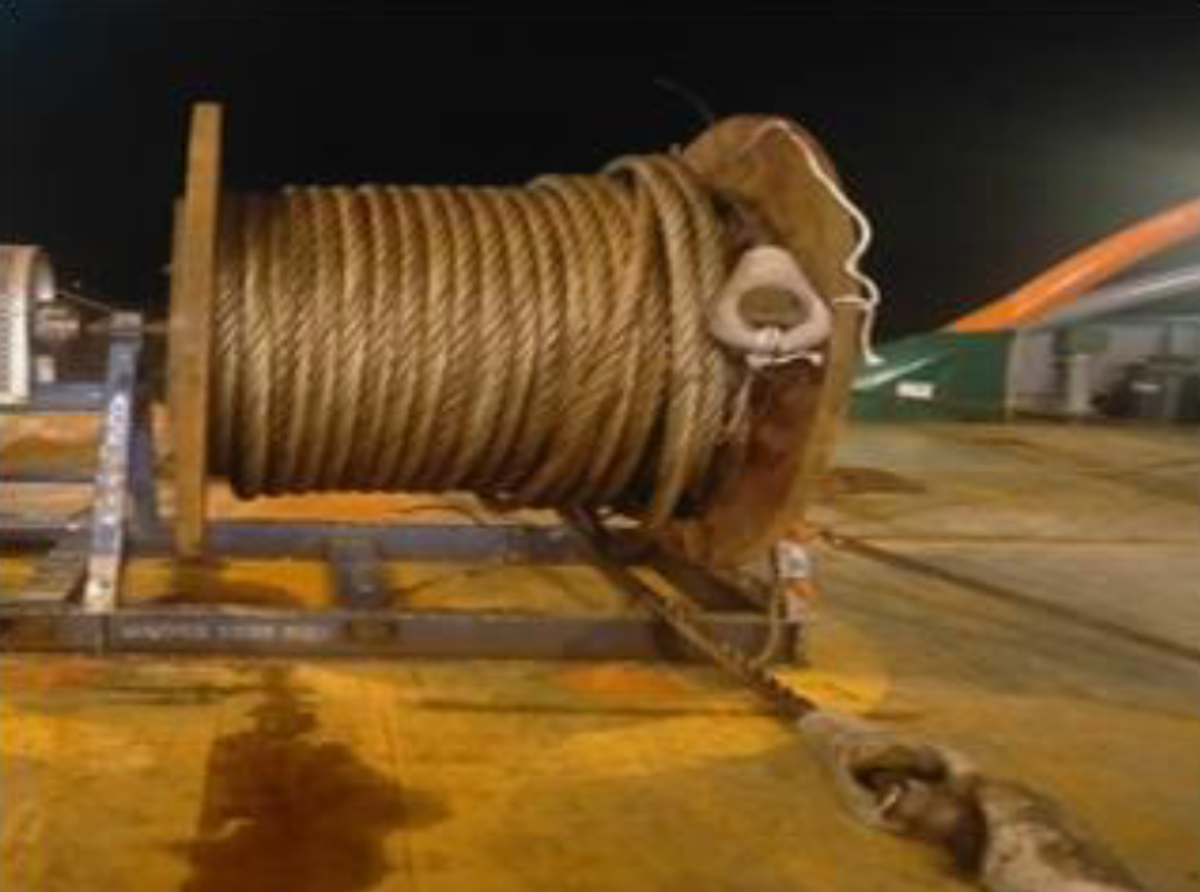Finger injury during shackle handling
- Safety Flash
- Published on 13 July 2023
- Generated on 17 December 2025
- IMCA SF 17/23
- 1 minute read
Jump to:
During a pennant wire spooling operation, the injured person was trying to remove a 35 tonne SWL shackle from the pennant eye.
What happened?
While trying to jiggle the shackle, it landed on the person's left middle finger causing a crush injury 1.5cm long.


What went wrong?
- The task supervisor (the Bosun) saw the crew person holding the shackle but did not warn him or intervene.
- There was no last minute risk assessment carried out.
- The shackle as initially used was the wrong size.
Actions
- The task supervisor is in charge to control the operation, ensure it is safely conducted, and that the proper tools are used. It is the responsibility of the task supervisor to intervene.
- Use appropriate tools such as crow bars and hammers to release heavy shackles, rather than your hands. Do not expose your hands by handling heavy items.
Related safety flashes
-
IMCA SF 11/22
4 May 2022
-
-
IMCA SF 29/20
9 October 2020
-
IMCA Safety Flashes summarise key safety matters and incidents, allowing lessons to be more easily learnt for the benefit of the entire offshore industry.
The effectiveness of the IMCA Safety Flash system depends on the industry sharing information and so avoiding repeat incidents. Incidents are classified according to IOGP's Life Saving Rules.
All information is anonymised or sanitised, as appropriate, and warnings for graphic content included where possible.
IMCA makes every effort to ensure both the accuracy and reliability of the information shared, but is not be liable for any guidance and/or recommendation and/or statement herein contained.
The information contained in this document does not fulfil or replace any individual's or Member's legal, regulatory or other duties or obligations in respect of their operations. Individuals and Members remain solely responsible for the safe, lawful and proper conduct of their operations.
Share your safety incidents with IMCA online. Sign-up to receive Safety Flashes straight to your email.